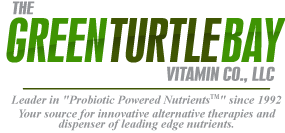Anthrax Antidote
New Agent Destroys Anthrax, Safe For Animals And Environment
From Patricia Doyle, PhD
dr_p_doyle@hotmail.com
The University of Michigan
9-28-2001
SAN DIEGO – BCTP looks like skim milk. Laboratory rats gain weight when they eat it. Spray it on your lawn and the grass will thrive. But according to tests conducted by University of Michigan scientists, this seemingly benign material could be a potent weapon against anthrax—one of the deadliest bacteria on Earth.
In a presentation at the Interscience Conference on Antimicrobial Agents and Chemotherapy (ICAAC) on Sept. 26, Michael Hayes, research associate in the U-M Medical School, presented experimental evidence of BCTP’s ability to destroy anthrax spores both in a culture dish and in mice exposed to anthrax through a skin incision. James R. Baker Jr., M.D., professor of internal medicine and director of the Center for Biologic Nanotechnology in the U-M Medical School, directed the research study.
BCTP was developed by D. Craig Wright, M.D., chief research scientist at Novavax, Inc.—a bio-pharmaceutical company in Columbia, Md.—and president of Novavax Biologics Division. According to Wright, the material is made of water, soybean oil, Triton X 100 detergent and the solvent tri-n-butyl phosphate.
“One of the most remarkable characteristics of this material is its ability to rapidly destroy a wide variety of dangerous bacteria and viruses, while remaining non-toxic to people, animals or the environment,” Baker said.
BCTP’s effectiveness against anthrax spores is especially significant, because they are so difficult to kill. “Spores are like freeze-dried bacteria,” Baker explained. “Their tough outer coat is resistant to disinfectants, freezing, drought, virtually anything we can throw at them. Spores can survive in the environment for many years and still generate live bacteria when given the right combination of water, nutrients and temperature.”
Concentrated doses of strong disinfectants like bleach or formaldehyde will kill anthrax spores, according to Baker. Unfortunately, they also are toxic to people and the environment, which makes them useless for decontaminating a person, a piece of land or equipment exposed to the bacteria.
Since the Persian Gulf War, military authorities have become increasingly concerned about the threat anthrax and other biological warfare agents pose both to our armed forces and civilian populations. “Anthrax is often fatal and easily dispersed through air or water,” Baker said. “We know that countries hostile to the United States have developed strains of anthrax which are resistant to antibiotics and existing vaccines. To counter that threat, the Defense Advanced Research Projects Agency (DARPA), is testing several possible new weapons against these biologic agents—including BCTP.”
“When properly formulated, the components in BCTP form an emulsion of tiny lipid droplets suspended in solvent,” said Wright. “These lipids fuse with anthrax spores causing the spore to revert to its active bacterial state. During this process, which takes four to five hours, the spore’s tough outer membrane changes allowing BCTP’s solvent to strip away the exterior membrane. BCTP’s detergent then degrades the spore’s interior contents. In scanning electron microscope images, the spores appear to explode.”
In his conference presentation, Hayes described how even low concentrations of BCTP killed more than 90 percent of virulent strains of Bacillus anthracis spores in a culture dish. “We observed sporicidal activity with dilutions as high as one part BCTP per 1,000 parts culture media,” Hayes said.
To determine its toxicity to animals, U-M scientists fed large amounts of BCTP to laboratory rats and injected mice with the material subcutaneously. The animals gained weight, remained healthy and suffered no adverse effects.
To determine BCTP’s effectiveness at treating animals exposed to anthrax spores, Baker’s research team subcutaneously injected mice with Bacillus cereus—a closely related species of bacteria that can be safely handled in a university laboratory setting. Like B. anthracis, its lethal relative, B. cereus produces large, ulcerous areas of dead tissue if it penetrates the skin through a cut or injury. If untreated, these skin infections spread systemically, producing severe illness and death in 80 percent of the laboratory mice in the study.
“When we washed the animal’s skin lesions with BCTP, the wounds began to heal,” Baker said. Mice receiving BCTP either simultaneously with B. cereus spores or whose wounds were washed with BCTP an hour after exposure had a 95 percent reduction in lesion size. The death rate for mice receiving BCTP was only 20 percent.
“Rapid inactivation of anthrax bacteria and spores combined with low toxicity makes BCTP a promising candidate for use as a broad-spectrum, post-exposure decontamination agent,” Baker said.
In future studies, Baker plans to evaluate BCTP’s effectiveness against inhaled anthrax spores, as well as other bacteria and enveloped viruses. His research has been funded by DARPA’s Unconventional Pathogen Countermeasures Program. The U-M and Novavax have filed a patent
application covering BCTP’s use as a decontamination agent for various anti-microbial applications. Baker is a member of the Novavax scientific advisory board, but has no significant financial interest in the company.
Contact:
Sally Pobojewski
Phone: (734) 647-1844
E-mail: pobo@umich.edu
News and Information Services
News Release 412 Maynard
Ann Arbor, Michigan
48109-1399




